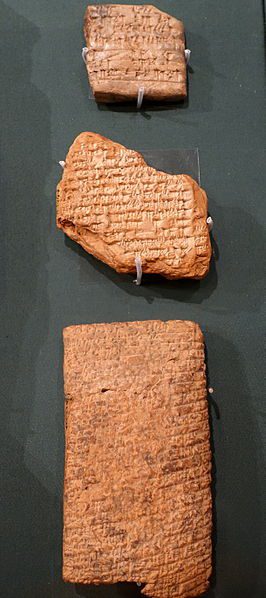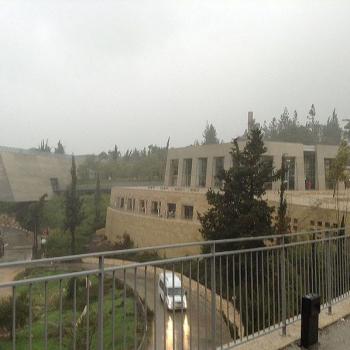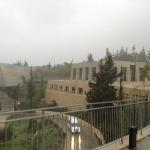
I’m writing from the floor of the ongoing conference on chiasmus here at Brigham Young University. Thus far, we’ve heard from Gary Rendsburg, Steven Scott, and BYU’s own Jack Welch. It’s all been Middle Eastern, whether the Epic of Gilgamesh or biblical. But now for something completely different: We’re currently listening to Professor Kerry Hull of Brigham Young University, who is speaking about “Chiastic Messaging in Mesoamerican Texts.”
***
Looming over me, however, is the approaching start of the new Fall 2017 term at BYU. Here’s what I’ll be teaching:
Arabic 362 — Classical Arabic Literature in Translation
Humanities 242 — Introduction to the Humanities of the Islamic World
Middle East Studies-Arabic 250 — Introduction to the Religion of Islam
I also have at least two students enrolled in Arabic 490R, which will be an independent directed readings class.
***
Here are some lines from a manuscript that I’m working on for publication:
The first question that comes up when we begin to discuss “the Arabs” is what, exactly, we mean by the term Arab. As the word is used today, it refers to people whose primary language is Arabic. This Semitic language, a relative of Hebrew, is spoken by well over a hundred million people and is the official tongue of countries from Iraq in the east to Morocco in the west. The largest Arabic-speaking country is Egypt. Even in Israel, Arabic, along with Hebrew, is one of the official national languages. This linguistic definition means that many Arabs are Christians. There’s no religious requirement, no necessity of being a Muslim, in order to be an Arab. It also means that most of the world’s Muslims are not Arabs. The Persians, for instance, who are better known to us today as Iranians, are devout Muslims but are not Arabs in any sense. In fact, their language is distantly related to English. (The Persian synonym for the English word “bad,” for instance, is bad, which seems rather closely related. The Persian word for “father” is padar; the word for “mother” is madar; and “brother” is biradhar.)[1] The Turks are Muslims but aren’t Arabs. Neither are the large Muslim populations of Pakistan, China, Nigeria, Kenya, India, Malaysia, the former Soviet Union, and many other nations. The largest Muslim country in the world is Indonesia, which isn’t Arab at all.
The important thing to note here is that calling someone an “Arab” today doesn’t necessarily say a great deal about his or her lineage. The Arabs of northwest Africa, presumably, have a far different genealogy than do the Arabs of Yemen or of Syria, fully a continent away. The notion that there might be no genealogical significance at all to the term Arab may come as something of a shock to many Latter-day Saints, who’ve been raised on the notion that the Arabs are the descendants of Abraham’s son Ishmael. But to say that there’s no genealogical aspect to “Arabness” wouldn’t be quite accurate, either. There is a connection between the Arabs and Ishmael. But we must be precise in the way we talk about it.
The Egyptians, as I’ve already noted, represent the largest national population of Arabs in the world. Yet the Egyptians of today are virtually all direct descendants of the ancient people who built the pyramids and the great temples at Luxor and Karnak, and those people weren’t Arabs. How we account for this fact will help to explain what I mean when I say that the Arabs’ descent from Ishmael must be carefully qualified. The original home of the Arabs is the area known as the Arabian Peninsula, occupied today by such states as Saudi Arabia, Yemen, the United Arab Emirates, and Oman. While the Arabs remained in their original homeland, the Egyptians remained clearly non-Arab, as did the populations of Iraq and Morocco. It was only when the Arabs, inspired by the call of Islam, poured out of the peninsula, across North Africa, and up into Mesopotamia, when they occupied those lands and began to intermarry with the local populations, and when their Arabic began to be the language of everyday speech in the conquered territories that those areas beyond the peninsula came to be “Arab” in the modern sense.
A useful way of distinguishing between the original more-or-less pure Arabs of the peninsula and the Arabs of today is to call the former peoples “Arabian.” These are the people who actually lived in the Arabian Peninsula. The subsequent conquests and intermingling, which we’ll discuss more fully hereafter, mean that “Arabian blood” is to be found throughout the Arab world. But it also means that, for many areas, and especially for the outlying ones, the lineage of Ishmael is probably not the dominant bloodline in the general population.
[1] On the other hand, the Persian word for “sister” is khwahar. We’re talking about a foreign language, after all.











